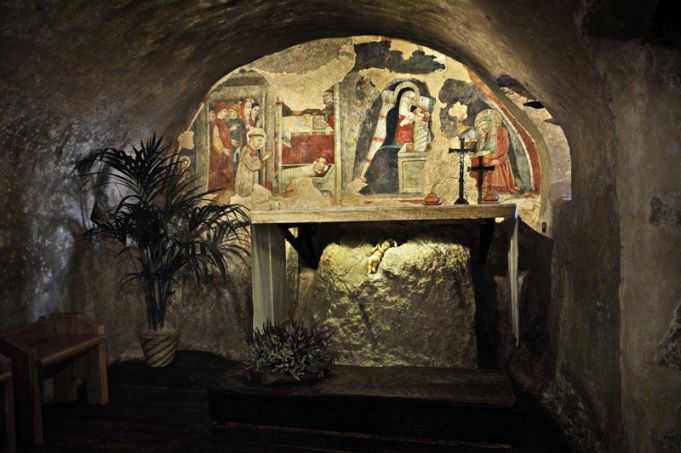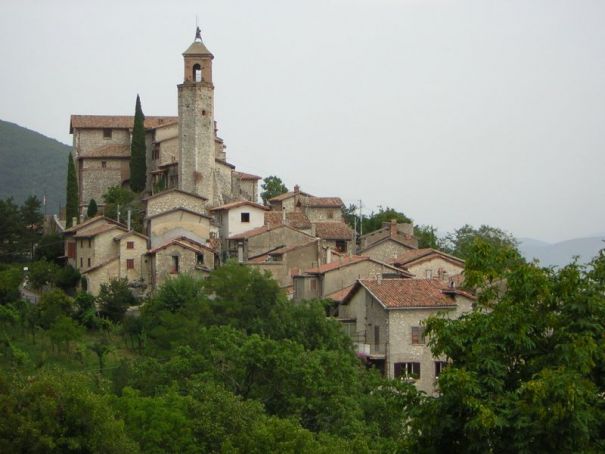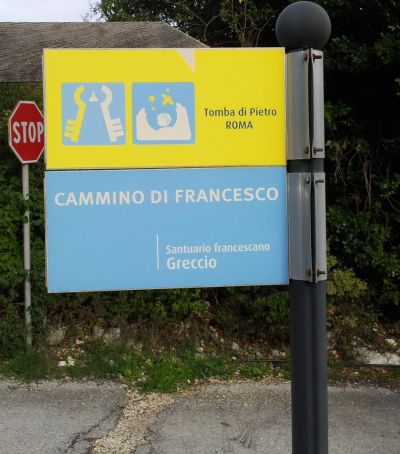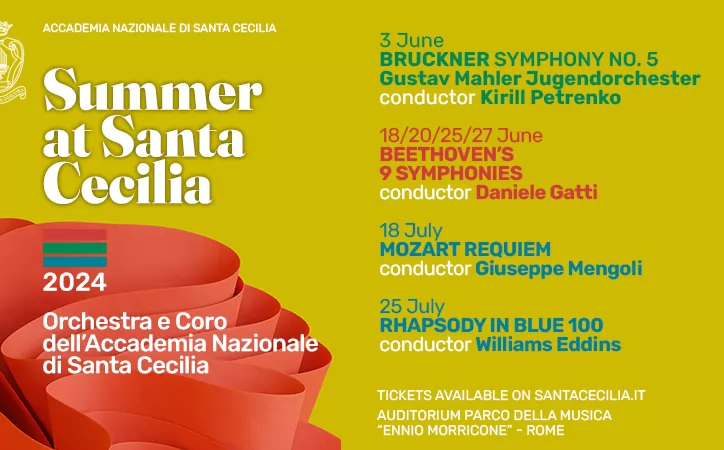Greccio: home of the world's first Nativity scene
St Francis is best associated with Assisi but there are also important sites in Lazio where he left his mark.
Greek is no longer spoken in upper Sabina, as it might have been more than a thousand years ago if the legend is to be believed of Greek settlers escaping war in their country and settling in Greccio. Just over an hour away by car from Rome, Greccio has a fascinating connection with St Francis of Assisi and with the birth of Jesus in Bethlehem.
First Grecia, then Grece, Grecce and finally Greccio, this picturesque village perched on rocks among the holm oak and beech forests of the Sabina mountains overlooking the Rieti plain attracts visitors from all over the world.
They come to see the Franciscan church and monastery, parts of which were founded in 1228 – the same year as the canonisation of the saint – and to look at the modern collection of nativity scenes set in such contrasting situations as a tent in sub-Saharan Africa or an Icelandic igloo. Greccio is now a world centre for such models showing the birthplace of Jesus.

The earliest written references to the village appear in the Register of Farfa Abbey compiled by Gregory of Catino in the 1090s, and show that Greccio was being enclosed by six towers and high walls as part of a defensive ring of fortifications in the area. These protected the approaches to the famous Benedictine abbey of Farfa that owned most of Sabina and beyond from the Middle Ages up until the end of the 18th century.
The defensive walls were not, however, strong enough to withstand assault by the troops of Frederick II in 1242 as the Holy Roman emperor made his way from Germany down the spine of Italy to Sicily, nor when Napoleon invaded and sacked the village at the end of the 18th century.
Only three towers remain in Greccio as a reminder of that defensive role, but today most visitors head for the hermitage in the rocks outside the village where St Francis is said to have slept in self-imposed discomfort, and where there is now a monastery, founded some 66 years after his death.
For the more energetic pilgrims, a walk up to La Capelletta, a chapel built in 1792 and visible on the skyline of Monte Lacerone (1,200m), might inspire them to rest and meditate there as Francis did before them. It was here in the early months of 1223 that he sought solitude to revise the rules of his Order to take account of its rapid growth and its missions outside Italy. During his absences abroad in Spain, Palestine and Egypt some parts of the Order had wandered from their strict observation of the simple rules on which it had been founded in 1210.
His first attempt to produce new rules resulted in a document that proved unworkable. He retired to Monte Lacerone in ill health, to "a hut protected by two Hornbeam plants" to redraft them, eventually sending his newly revised version for approval by Pope Honorious in Rome in Advent 1223. It has remained substantially unchanged to this day.
It is said that Francis started living on Monte Lacerone in 1217 and that the lord of Greccio, Giovanni Velita, had pressed him to come down to the village to preach to the inhabitants and eventually to live among them. Apparently the holy man responded by getting a child to throw a burning firebrand from the mountain into the valley below saying that he would live wherever it landed. Legend has it that it came to rest a kilometre or so north of the village, against the rocks which then became his hermitage.
This is supposed to have been his favourite hermitage, although he stayed in many other places during his travels. When he returned, tired and unwell, to Greccio in 1223, it was there that he organised the first ever live re-enactment of the Bethlehem nativity scene, using a donkey and an ox and his followers on Christmas Eve. And it was there that his follower, St Bonaventura, built parts of the present monastery after Francis' death.
Despite a failed attempt to visit Palestine in 1212 when he was shipwrecked off the Dalmatian coast, Francis' eventual connection with the Holy Land and Bethlehem came about in 1219. On this occasion he travelled to Damietta on the Nile delta while armies of the Fifth Crusade, proclaimed by Pope Innocent III in 1213, were besieging the city. Francis – a man of peace – journeyed to Damietta to attempt to convert Sultan al Kamil, the head of the Ayyubid empire, to Christianity so that Jerusalem and Palestine could return to Christian control.
It is uncertain what occurred at the meeting between them, although later reports claim the sultan gave Francis permission to visit Jerusalem and Bethlehem. What is certain is that the crusade continued for another two years and ended in defeat for the crusaders. It was during this period that Francis developed the idea of portraying the poverty surrounding the birth of Jesus in a Bethlehem stable occupied by an ox and a donkey.
His abiding belief in a life of poverty is well reflected in what his biographer Thomas of Celano reports was his request to his friend Velita, lord of Greccio, late in 1223:
"If now it seems good to thee that we should celebrate this feast together, go before me to Greccio and prepare everything as I tell thee. I desire to represent the birth of that Child in Bethlehem in such a way that with our bodily eyes we may see what He suffered for lack of the necessities of a newborn Babe and how He lay in manger between the ox and ass."
Velita complied, provided the necessary props and animals, and word soon spread among the Franciscan community and people living in Sabina about this extraordinary event. Crowds came carrying candles and burning torches, while fires lit the scene and Mass was said over the crib with the animals standing by.
Still today, the first ever living nativity scene is re-enacted every year late on Christmas Eve and on another six nights following, as it was in 1223, but now added to by other scenes explaining the whole story of St Francis' involvement. Today a grandstand guarantees the modern, warmly-dressed visitor a good view of the proceedings under the floodlit cliffs to which the mediaeval monastery clings.
By Philip Biss
Useful information
Greccio is a pretty, little-known village with a wide central piazza and occupies a panoramic position overlooking the Rieti plain. The former marshland was drained in early Roman times when a canal was dug to the plateau edge at Marmore, allowing the Velino river to cascade into the Terni valley below, forming the highest man-made waterfall in Europe, well worthy of a visit. Check the website to be sure of catching the magical moment when the water is released.
There are several good restaurants in Greccio, not least the appropriately named Nido del Corvo, which has excellent food and a spectacular view.
Getting there
By road from Rome: Take the Via Salaria to Rieti and then turn left and proceed about six km towards Terni, turning off left to Contigliano and then following the signs for Greccio.
By bus from Rome: Cotral bus from Tiburtina to Rieti. Then Cotral bus from Rieti to Greccio.
By train: from Terni in the direction of Rieti, alighting at Greccio station and taking a local bus.
Cammino di Francesco
For those who want to follow St Francis’ pilgrim route to Rome, there are good sign posts for the Cammino di Francesco.
For further information see Proloco website.
General Info
View on Map
Greccio: home of the world's first Nativity scene
02045 Greccio, Province of Rieti, Italy























